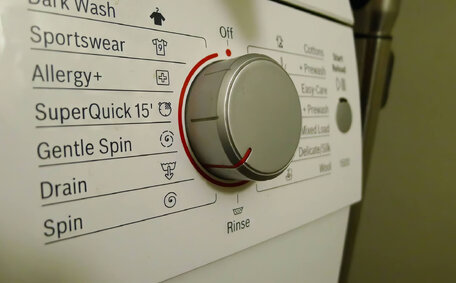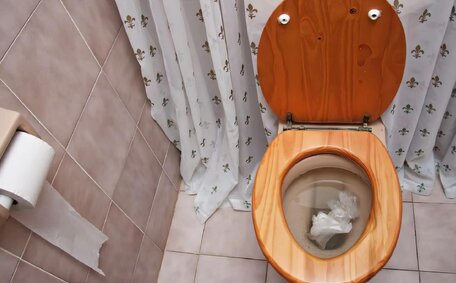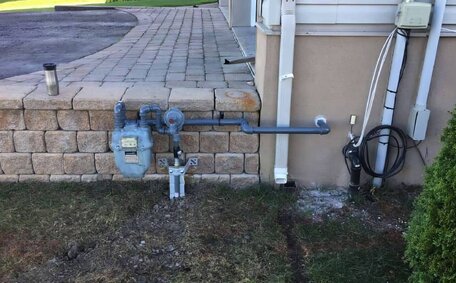How Soil and Sediment Can Lead to Blocked Drains
Blocked drains are a common issue that can cause major headaches for homeowners and businesses alike. One of the leading causes of drain blockages is the accumulation of soil, sediment, and other debris within drainage pipes.
When it rains, water running over loose soil can erode and transport sediment into gutters and drains. Construction sites are notorious culprits, as bare earth is easily washed away.
But even in urban areas, loose dirt, plant matter, and accumulated grit on roads and driveways can be picked up by rainwater and flushed into drainage systems.
Over time, fine sediment collects and builds up inside pipes, constricting water flow. The sediment then acts as a dam, catching any solid debris in the water and making the clog worse. Tree roots exacerbate the issue, particularly when rains encourage them to break into pipes in search of moisture.
The result is backed-up drains, flooded properties, and excess water spilling into streets and waterways. Sediment pollution negatively impacts aquatic life by reducing light penetration and introducing excess nutrients that can trigger algal blooms. It also affects water quality for human use and increases infrastructure costs due to accelerated pipe corrosion.
In the Padstow area, soil erosion and urban runoff are major factors contributing to blocked drains after heavy rainfalls. Preventative measures like sediment traps and regular drain pipe maintenance are crucial to reduce blockages.
Common Causes of Soil and Sediment Buildup
There are several common sources that contribute soil and sediment buildup in drains:
- Construction sites - Exposed soil at construction sites is highly vulnerable to erosion during storms. Runoff can carry large volumes of sediment from the site into nearby drains. Poor installation of sediment controls like silt fencing exacerbates this.
- Urban runoff - Fine particulate matter from vehicle emissions, weathered building materials, organic debris, and erosion collect on impervious surfaces in cities. During rain, this polluted runoff enters storm drains.
- Agricultural areas - Clearing vegetation for crops leaves soil exposed to water and wind erosion. Runoff carrying sediment, fertilisers and pesticides then flows into drainage systems.
- Land clearing - Mass clearing of vegetation for development or infrastructure leaves soil unstable. The large loads of sediment mobilised during rains can overwhelm drains.
- Streambank erosion - Unstable banks near creeks and waterways collapse into the channel. Sediment is then washed downstream during floods, accumulating in any pipes or culverts.
Proper erosion and sediment control practises during construction, agriculture and land clearing are crucial to prevent excess soil from entering and blocking stormwater drainage infrastructure.
Consequences of Sediment Pollution
Excess sediment washing into drains has detrimental effects that extend far beyond just clogged pipes. This condition, known as eutrophication, severely impacts aquatic organisms like fish and plants that rely on dissolved oxygen for respiration.
The influx of nutrient-rich soil promotes algal blooms after entering waterways. The influx of nutrient-rich soil promotes algal blooms after entering waterways.
Sediment particles physically disturb stream beds and suffocate fish eggs with a thick layer of silt. Migratory fish can fail to reach breeding grounds due to blocked access from sediment accumulation behind dams and weirs.
In the ecologically diverse Georges River system around Padstow, sediment pollution could be disastrous. Added nutrients triggering algal blooms can irreversibly disrupt the river’s food web. Conservation efforts and stormwater controls are vital to prevent sediment-laden runoff into these fragile waterways during heavy rains.
Sediment also causes problems for homeowners by degrading drainage system capacity and accelerating pipe corrosion. Preventing excessive soil erosion is critical to avoid sediment’s drainage, environmental and financial impacts.
Preventing and Managing Sediment Blockages
There are several key strategies to prevent sediment accumulation and manage sediment blockages in drainage systems:
Installation & Maintenance Practises
- Ensure drainage systems are installed correctly according to plumbing codes, with appropriate gradient and capacities.
- Inspect and routinely clean gutters, drain covers and leaf guards to remove debris before it enters pipes.
- Conduct regular high-pressure water jetting every 6-12 months to flush sediment from drainage pipes.
- Use CCTV drain inspections to identify problem areas of sediment buildup.
Erosion & Sediment Controls
- Stabilise exposed soil on construction sites and agricultural land with vegetation, mulch or geotextile covers.
- Install temporary sediment controls like silt fencing around work sites to filter runoff.
- Construct permanent sediment basins and traps to capture and treat stormwater.
- Line channels and waterway banks with rocks or vegetation to prevent erosion.
Protective Site Design
- Preserve existing vegetation around developments to maintain soil stability.
- Revegetate cleared areas by planting native grasses, shrubs and trees.
- Use drainage inlet filters and tree guards to keep organic matter out of pipes.
- Direct runoff into landscaped garden beds, rainwater tanks or infiltration zones to reduce reliance on piped drainage and water pollution.
By following soil conservation, stormwater treatment and preventative cleaning best practises, sediment buildup can be minimised for optimal drainage system performance.
Employing Sediment Control Techniques
Construction sites can generate copious amounts of sediment-laden runoff that contribute to blocked drains. Strategic erosion and sediment control practises are crucial to manage this vulnerable soil.
Perimeter sediment controls like silt fences and sediment traps can filter coarse sediment and prevent it leaving sites. Positioning these along contours across drain inlets and areas of concentrated flow maximises treatment. Regular maintenance is vital to prevent failure during large storm events.
Sediment tanks and basins detain runoff, allowing sediment to settle before discharge. Sites should direct all runoff to a sediment basin sized for a minimum 5 day retention time for particles to settle. Dewatering must be via an outlet filter to retain sediment.
Access routes onto sites require stabilisation using aggregate, rumble grids or wash down bays to prevent sediment tracking. Stockpiles must be covered and located away from waterways. Vegetative ground cover should be established as soon as possible.
In floodprone Padstow, these controls are imperative during the land development process. Poor site management severely exacerbates sediment issues, smothering local waterways. Proactive erosion and sediment control protects drainage infrastructure and aquatic health.
Adopting Sustainable Land Management Practices
Adopting sustainable land management practises is crucial to prevent soil erosion and sediment pollution issues over the long term. This involves holistic planning that balances environmental, social and economic needs without compromising the land’s health.
Strategic Vegetation Planning
Carefully planning vegetation coverage helps stabilise soil and prevent erosion. Native grasses, shrubs and trees suited to the local climate and soil conditions should be planted, particularly on slopes and drainage lines. The extensive root systems bind soil while thick groundcover shields surfaces.
Controlled Grazing Regimes
Overgrazing exposes soil and increases susceptibility to water and wind erosion. Managing livestock rotation between fenced paddocks can also allow pasture to recover. Limiting stock during drought also prevents overgrazing and land degradation.
Conservation Farming Techniques
Practises like no-till farming, contour ploughing and using ground cover crops help conserve soil and retain moisture. Constructed wetlands filter and retain sediment and nutrients from farmland runoff.
Water Management Plans
Developing whole-of-catchment water plans balance environmental flows and productive water extraction. Upgrading irrigation infrastructure reduces losses, runoff and drainage issues. Lining channels also prevents seepage erosion.
With holistic land management practises, the agriculture, horticulture and construction industries can coexist sustainably with natural landscapes. This maintains productivity without degrading soil and water ecosystems.
When to Call a Professional Plumber
Blocked drains can quickly escalate from a nuisance to an emergency, threatening to flood properties and damage infrastructure. While DIY drain cleaning solutions may seem convenient, many severe blockages warrant calling a professional Padstow plumber.
Signs You Need a Pro
- Using a drain snake doesn’t clear the blockage
- Multiple plumbing fixtures are backing up
- You suspect the main sewer line is blocked
- Drain issues reoccur frequently
- CCTV reveals collapsed or damaged pipes
- Heavy rains flood stormwater infrastructure
Benefits of Hiring Padstow Plumbing
As leading Padstow plumbing professionals, we have the expertise and equipment to tackle the toughest blockages quickly and effectively:
- High-pressure water jet drains deeper than DIY drain snakes
- CCTV drain inspections accurately identify issues
- Trenchless pipe relining repairs damaged pipes without digging
- Sewer cleanouts provide direct main line access
- Emergency plumbing services minimise flood damage
- Advice on optimising drainage systems against sediment
Don’t wait for minor drain issues to amplify. Our specialist plumbing services keep pipes clear and property protected, without the hassle of tackling severe sediment blockages yourself.
Padstow Plumbing’s Blocked Drain Services
At Padstow Plumbing, we are the leading experts when it comes to blocked drains and sewer repairs. With over 15 years servicing the Padstow area, our team has seen it all and can quickly get your pipes and drains flowing freely again.
Emergency Blocked Drain Services
If you are currently facing a blocked drain crisis with sewage overflowing inside or outside your property, call our 24/7 emergency hotline immediately on 1300 349 338. We can despatch our drain service trucks promptly to resolve burst pipes, sewer line blockages or any other urgent issues.
General Drain Unblocking and Maintenance
We also cater for minor drain blockages caused by fat, soap residue and foreign objects with our high-powered water jetting equipment. To prevent recurring issues, our Padstow plumbers will provide a CCTV pipe inspection followed by recommendations on optimising your drainage system.
Regular maintenance services like our Pipeline Plumbing Package allow us to proactively service your drains every 6 months, keeping pipes clean and sediment buildup at a minimum.
Sewer Drain Repairs and Installation
Where drain lines have become damaged or need upgrading, Padstow Plumbing has all capabilities from pipe relining to full drain replacement. We can install new sewer connections to your home safely with minimal digging required thanks to our trenchless technology.
Trust our certified and insured Padstow plumbing professionals to handle any blocked drain or sewage issues promptly. Email us or call 1300 349 338 to book an appointment today.






